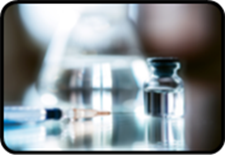Call Chemical Waste Services if you are uncertain about: - Concentration
- Contents in the total waste
- pH
| 
|
Range of pH - Any aqueous waste outside the pH range of 6 to 10 is not authorized for discharge to the drain
- The pH range must be between 6 and 10 at the point of disposal
| 
|
Autoclave approved antibiotics before discharge - The NIH Drain Discharge Guide lists antibiotics that may be autoclaved and discharged to the drain. All other antibiotics must be disposed through Chemical Waste Services
- Bleach combined with any antibiotics must be disposed through Chemical Waste Services
| 
|
All approved chemicals are used in a process before discharge
| 
|
NIH is licensed by the Washington Sanitary Suburban Commission (WSSC) to discharge certain waste streams to the sanitary sewer if NIH remains within certain parameters.
- An unauthorized discharge can seriously affect these parameters. If WSSC revokes the NIH permit, waste disposal costs will increase and resources will be burdened.